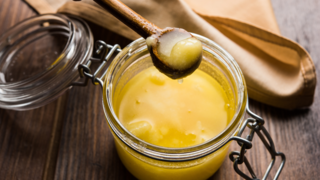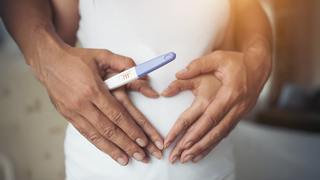And it’s valid.
Because while many birthing experiences go smoothly, up to 90% of first-time vaginal births involve some form of tearing. Still, the topic is brushed aside, with most people told to “just push through it.” What no one tells you is that tears range in severity, are mostly preventable to some extent, and always deserve respectful aftercare.
Let’s break it down.
What Is a Perineal Tear?
The perineum is the area between your vagina and anus. During vaginal birth, especially if the baby is large, comes quickly, or needs assistance, this tissue can tear.There are four degrees of perineal tears:
- First-degree: Minor tear in the skin. Usually heals on its own.
- Second-degree: Skin and muscle tear. Requires stitches but typically heals well.
- Third-degree: Tear extends into the anal sphincter. Needs surgical repair.
- Fourth-degree: Extends through the anal sphincter into the rectal mucosa. Requires surgical intervention and long-term recovery.
Why Tearing Matters
Tearing is more than a moment during birth; it can affect:- Postpartum pain: Pain while sitting, walking, or using the toilet.
- Healing time: Deep tears can take weeks or months to fully heal.
- Pelvic floor health: Increases risk of prolapse or urinary incontinence if not supported properly.
- Mental health: Fear of re-injury can impact intimacy or even decisions about future births.
What Increases Your Risk of Tearing
You can’t control everything about birth, but being aware of the risk factors helps you prepare:- First-time vaginal birth: Your perineum has never stretched this way before.
- Instrumental delivery: Forceps or vacuum use increases tear risk.
- Large baby (macrosomia): Babies over 4kg put more pressure on the perineum.
- Fast labour or pushing: Rapid births don’t give tissues time to stretch.
- Episiotomy: An intentional cut can sometimes lead to a more severe tear.
- Upright birthing positions: While often beneficial, positions like squatting or kneeling may increase tear risk without proper support.
Can You Prevent or Reduce the Risk?
Not entirely, but certain practices do help.- Perineal massage (from 34 weeks onward): Gently stretching the area with fingers or oil may improve tissue elasticity. Some studies show reduced risk of third- and fourth-degree tears with consistent massage.
- Warm compresses during pushing: Midwives often place warm cloths on the perineum during crowning. This relaxes the muscles and softens the tissues.
- Controlled pushing: Avoid “purple pushing” (straining hard while holding breath). Let your body guide you. Gentler, slower pushes allow more gradual stretching.
- Supportive birthing positions: Side-lying or hands-and-knees can reduce pressure on the perineum.
- Skilled midwife or OB presence: Someone trained to support the perineum during delivery can significantly reduce tearing.
What If You Do Tear?
Here’s what to expect and how to heal.- Stitches: Most second- to fourth-degree tears are repaired with dissolvable stitches shortly after birth.
- Pain relief: Ice packs, painkillers (as advised), witch hazel pads, and warm sitz baths can help ease soreness.
- Toileting support: Use a peri bottle to rinse while peeing. Fibre-rich food, stool softeners, and hydration will help avoid constipation.
- Rest and elevation: Lying down takes pressure off the perineum. Use a cushion or “donut” when sitting.
- Pelvic floor therapy: If you experience ongoing discomfort, heaviness, or incontinence, see a pelvic physiotherapist. They’re trained to help post-birth recovery.
Emotional Support: Don’t Minimise Your Experience
It’s not “just a tear.”Tearing can be traumatic, especially if it was unexpected or downplayed. If you feel anxiety around your recovery, intimacy, or even fear of future births, you deserve support.
- Talk to a counsellor or therapist trained in birth trauma.
- Seek a pelvic floor therapist even if you didn’t have a severe tear.
- Join postpartum groups where you can speak openly, without shame.
FAQs on Terrified of Tearing During Birth? Here’s What You Need to Know (and What No One Tells You)
- Does everyone tear during a vaginal birth?
Not everyone, but about 70–90% of first-time vaginal births involve some degree of tearing. The majority are minor and heal well. - Can I avoid tearing completely?
You can reduce the risk, but it’s not always preventable. Birth is unpredictable. Perineal massage, warm compresses, and slow pushing can help. - Will it affect my ability to have sex later?
Some may feel discomfort or fear during intimacy, especially with deeper tears. With time, pelvic therapy, and communication, many return to pain-free sex. - Are episiotomies safer than natural tearing?
Not necessarily. Routine episiotomies are no longer recommended in most guidelines. Natural tears often heal better than surgical cuts.






